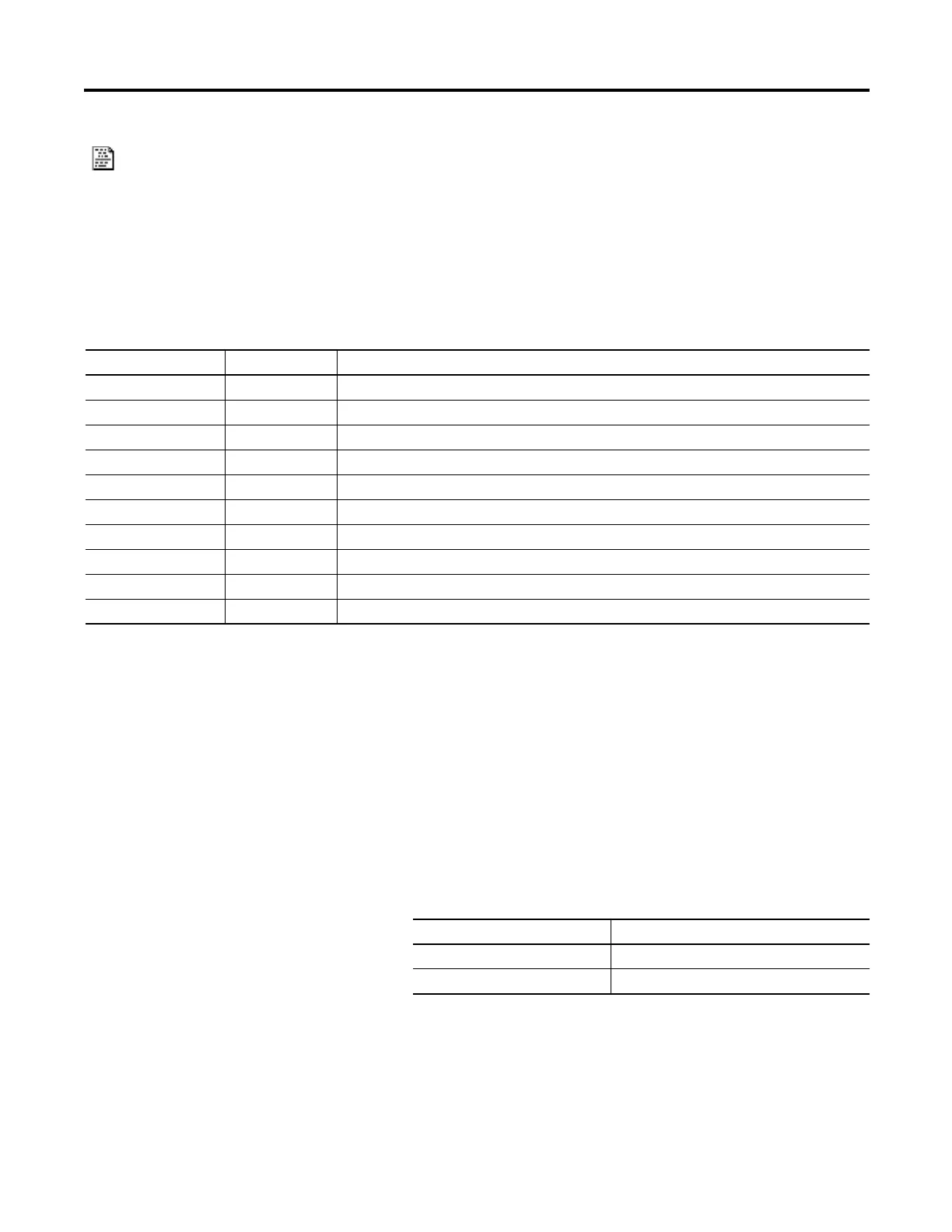Rockwell Automation Publication 1756-RM003N-EN-P - October 2011 599
ASCII Serial Port Instructions (ABL, ACB, ACL, AHL, ARD, ARL, AWA, AWT) Chapter 17
Structured Text
The operands are the same as those for the relay ladder AWA instruction.
However, you specify the Serial Port Control Length and the Characters Sent
values by accessing the .LEN and .POS members of the
SERIAL_PORT_CONTROL structure, rather than by including the values in
the operand list.
SERIAL_PORT_CONTROL Structure
Description: The AWA instruction does the following:
· Sends the specified number of characters (Serial Port Control Length) of
the Source tag to the device that is connected to the serial port of the
controller
· Adds to the end of the characters (appends) either one or two characters
that are defined in the Controller Properties dialog box, User Protocol tab
Follow these guidelines to program the AWA instruction.
1. Configure the serial port of the controller.
a. Does your application also include ARD or ARL instructions?
b. Define the characters to append to the data.
2. This is a transitional instruction.
· In relay ladder, toggle the rung-condition-in from cleared to set each
time the instruction should execute.
AWA (C h anne l, S ourc e,
SerialPortControl);
Mnemonic Data Type Description
.EN BOOL The enable bit indicates that the instruction is enabled.
.EU BOOL The queue bit indicates that the instruction entered the ASCII queue.
.DN BOOL The done bit indicates when the instruction is done, but it is asynchronous to the logic scan.
.RN BOOL The run bit indicates that the instruction is executing.
.EM BOOL The empty bit indicates that the instruction is done, but it is synchronous to the logic scan.
.ER BOOL The error bit indicates when the instruction fails (errors).
.FD BOOL The found bit does not apply to this instruction.
.LEN DINT The length indicates the number of characters to send.
.POS DINT The position displays the number of characters that were sent.
.ERROR DINT The error contains a hexadecimal value that identifies the cause of an error.
If Then
Yes Select User mode
No Select either System or User mode
